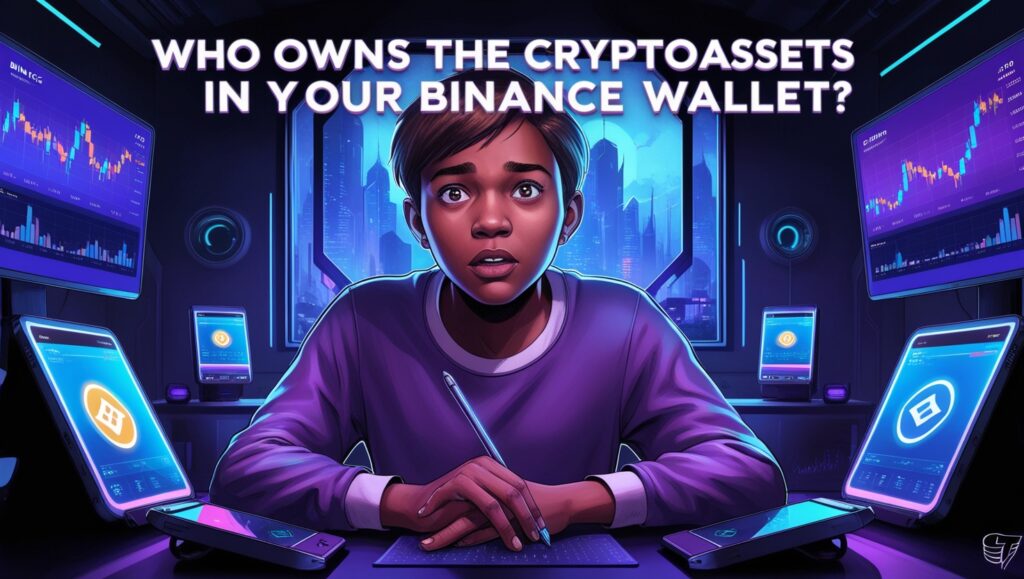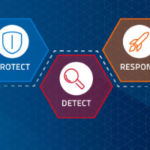In this article, I will talk about the Who Owns the Cryptoassets in your Binance Wallet. With most users, there is always a curiosity on whether they actually possess their crypto currencies after putting them on an exchange.
Let’s dive into the distinction between beneficial ownership and legal custody, how Binance handles your assets, and the associated risks of holding crypto on the platform.
Who Owns the Cryptoassets in your Binance Wallet?

When filling up any of your Binance wallets (Spot Wallet, Futures Wallet, Earn Wallet,…), your beneficial ownership of the assets is intact. Binance, however, has legal custody of the assets while they are hosted on the platform.
Following is an analysis of the above.
Custody Ownership

Binance is entrusted as a custodian and retains beneficial ownership. Your crypto is stored in their wallets (cold and hot wallets) and they secure it
User’s Rights
You have the right to withdraw your crypto at any time, provided there is no account lock, regulatory freeze, or technical difficulties (escrow account).
Legal Title
As Binance exercises control over the private keys, they hold legal ownership in lots of jurisdictions where assets are continually held on exchange. You can claim those assets, however, not control the private keys.
Terms of Service
Treatment of the assets is specified in Binance’s Terms of Use. In some extreme situations like bankruptcy, user assets are no longer corporate property.
Risk
There is custodial risk since Binance controls the keys. Your access to crypto may be obstructed If something happens to Binance (hack, insolvency).
The Legal and Regulatory Framework
The legal and regulatory framework for cryptocurrencies can be quite different from one jurisdiction to the other.
Most governments now are striving to develop regulations that will encapsulate the respectable issues arising from the digital assets.
For instance, the European Union launched the Markets in Crypto-Assets Regulation (MiCA), which obligates crypto service providers to prevent and detect abuse of cryptocurrencies.

In the US, the SEC and CFTC are among the volatile regulatory agencies participating in the supervision of the crypto market.
These frameworks not only aspire to control the risks posed to customers, but also to the markets and the financial system as a whole, however they endorse cutting edge technology.
How to Secure Your Cryptoassets on Binance?
The different ways you can protect your crypto assets on Binance so that your investments do not get a risk of being stolen or hacked or accessed by any unauthorized person.

Binance has implemented a number of different security features for the users funds, and you have an opportunity to make use of these to further secure your digital fort.
Next, they have a step by step procedure of securing your cryptoassets on Binance:
1. Activate Two-factor Authentication (2FA)
Two-Factor Authentication (2FA) is one of the mechanisms that help to increase the security level of your account.
Activating this feature allows you to enter not only your login details but also the verification code received through an authentication application like Google Authenticator or an SMS.
Therefore, if your password is disclosed, it is not a guarantee that anyone could log into your account.
2. Try and nontrivial strong passwords
For your account mind of Binance, be on the safer side and always use strong and unique passwords.
The complexity of the password should be so as to contain upper and lowercase letters, digits and special symbols.
Refrain from using easy information like names or birth dates or common language expressions.
In this case, a password manager may be handy since it may easily generate and remember complicated passwords for you.
3. Configuring Anti Phishing Code
Another feature that Binance has is Anti-Phishing Code that helps out with phishing attacks.
If this feature is enabled, all the emails sent out from Binance will include this code.
Thus, if you receive an email and the code matches the code in the email, you can be sure that it came from Binance and not phishing.
Turn On Withdrawal Whitelist for Binance Account
The feature facilitates specifying a set of approved addresses to which funds from a Binance account may be withdrawn.
When this feature is turned on, only addresses that are on the whitelist can be used to withdraw funds.
This acts as an additional level of security should your account be hacked however if someone does get access to your account, they will not be able to withdraw your crypto except they have the specific whitelisted address.
Change Your Security Settings As Often As You Can
Ab input a password or username that looks like yours enwere stored on their systems of servers.
To enable such features, the point is to make it a habit to frequently update any and security settings with Binance.
This too includes verifying loved ones, 2FA authentications, and the current password, and reviewing the email associated with the withdrawal whitelist.
Phishing and Scams Do Exist – Avoid Them!
Be vigilant when it comes to unsolicited requests in emails or social platforms where you might be asked to share personal information regarding your account.
No one who works for Binance will ask you for your password or 2FA codes through messages, the email or social networks. Avoid opening unknown links or attachments.
The safest way to log in is by typing the Binance address in the web browser.
If You Are a Long Term Holder, Switch to A Cold Wallet
If you hold a large sum of cryptocurrency, it may be wise to move your holdings to a cold wallet for long-term storage.
Physical cold wallets like Ledger or Trezor keep your private keys offline and thus cannot be hacked over the internet.
The facility offered by Binance to withdraw digital assets to an external wallet is appropriate for users who don’t plan to trade with their funds very often.
Look Out for Any Unauthorized Activity on Your Account.
If you keep the account active with frequent transactions, dont forget to login to your account now and then to see if any transactions not done by you have taken place.
Binance has a feature called ‘API Management’ that allows you to view all the API keys registered against the account as well as the recorded history of his actions.
Keeping an eye on these can help you quickly address any bad practice for which you may need to act upon.
Activating Device Management
By enabling the device management option in Binance, one can see which devices have had access and if there are any unauthorized ones, they can be taken down immediately.
This feature comes in handy as it makes sure that only the user’s trusted devices log into the account.
VPN (Virtual Private Network) Use
When logging into the Binance account, particularly through a shared or public network, it is better to mask the IP address and encrypt the connection by utilizing a VPN.
This has the added advantage of privacy and security as hackers will be unable to monitor the target’s online traffic or whereabouts.
Conclusion
To conclude this article, it can be stated that Binance does provide a safe environment for users who want to trade and keep their cryptoassets, but as far as your assets are concerned, you, the account holder still own them even in your Binance wallet.
Binance is simply a custodian that provides managed acess to tools with which you transanct in crypto but as a user, you have to be alert and enforce the rights of ownership of your assets.









